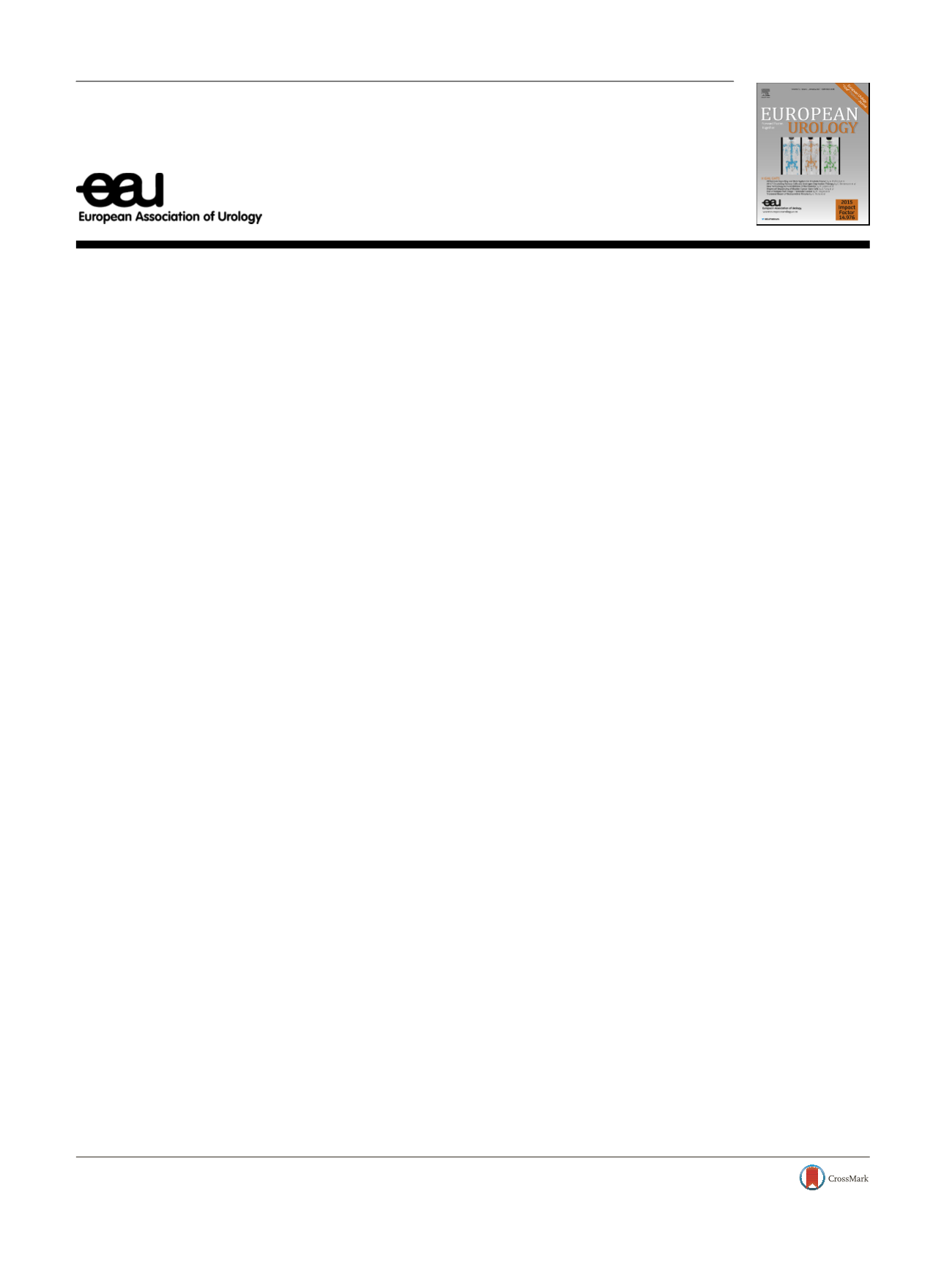

Letter to the Editor
Reply to Julie Steinestel, Christof Bernemann,
Andres J. Schrader, and Jochen K. Lennerz’s Letter to the
Editor re: Emmanuel S. Antonarakis, Changxue Lu,
Brandon Luber, et al. Clinical Significance of
Androgen Receptor Splice Variant-7 mRNA Detection
in Circulating Tumor Cells of Men with Metastatic
Castration-resistant Prostate Cancer Treated with
First- and Second-line Abiraterone and Enzalutamide.
J Clin Oncol
[5_TD$DIFF]
2017;35:2149–56. AR-V7 Testing:
What’s in it for the Patient?
Estimating the Clinical Utility of Blood-based AR-V7
Testing in Prostate Cancer
Dr. Steinestel and colleagues commented on some of the
data presented in our recent study
[1]and communicated
their perspectives on the clinical utility of the AR-V7 test in
castration-resistant prostate cancer (CRPC). They presented
their viewpoints on the limitations of the circulating tumor
cell (CTC)-based AR-V7 biomarker, particularly as a
predictive marker in guiding treatment selection between
first-line abiraterone or enzalutamide (abi/enza) and taxane
chemotherapy for CRPC patients. The authors tabulated
response rates (to abi/enza vs chemotherapy) in AR-V7
+
patients using data from this study and a recent meta-
analysis
[2]and applied a 50% prostate-specific antigen
(PSA) decrease (PSA
50
) as the measure of clinical efficacy. By
calculation, they estimated that 1.5% of the CRPC population
would benefit if AR-V7
+
patients were treated with
chemotherapy. The authors also calculated the ability of
the biomarker to identify non-responders, again using
PSA
50
decrease as the measure for clinical response. They
concluded that AR-V7 status in CTCs could not predict lack
of response in the majority of patients (only 27% of non-
responders were identified), and implied very limited utility
given the lack of substantially improved efficacy should AR-
V7 testing be used to guide treatment decisions in the first-
line CRPC setting.
While we agree that the CTC-based AR-V7 test does not
predict response perfectly and that additional predictive
biomarkers and therapies are needed to benefit more
patients, we feel it is premature to quantify clinical utility at
this time for several reasons. First, we do not necessarily
think that responses, measured as PSA
50
declines, would be
‘‘unexpected’’ as the authors contend, in men with positive
AR-V7 status treated with first-line abi/enza. The proposi-
tion that AR-V7
+
men were not expected to experience
PSA
50
responses stems from our original study
[3], in which
none of 18 AR-V7
+
men achieved PSA
50
declines. However,
there were only a small number of AR-V7
+
men in that
original study, leading to a 95% confidence interval of 0–
19%, and only five of the 18 AR-V7
+
patients were treated
with first-line novel hormonal therapy (1 with enza, 4 with
abi). The authors had previously reported a 19% PSA
50
response rate in 21 patients (most treated with first-line
enza) who tested positive for AR-V7 using their assay
[4] .We also reported a similar response rate (26% among
15 AR-V7
+
men) in the first-line abi/enza setting
[5]. Of
importance, just as PSA
50
is an imperfect measure of clinical
benefit, the current version of the CTC-based AR-V7 test
depends on the presence of CTCs and is thus also an
imperfect measure of biomarker status. Notably, both
measures (the clinical parameter and the biomarker
parameter) are continuous variables that are treated as
binary variables in these analyses. It was thus well expected
that in the first-line CRPC setting involving a larger number
of AR-V7
+
patients, PSA
50
declines would be observed in a
subset of patients.
Second, while we agree with the need for biomarker-
stratified trials to further determine the predictive value of
AR-V7, we contend that the 1.5% overall benefit (improved
response rate by 1.5%) from the use of the AR-V7 test, as
calculated by the authors, does not provide insight into and
guidance on the potential clinical utility of this biomarker.
To derive this, the authors used statistics from a meta-
analysis comprising different studies, all with small sample
sizes and involving diverse test platforms and patient
populations. Furthermore, the underlying assumption that
they made about the marker prevalence based on our
single-institution data needs validation. Therefore, the
accuracy of the calculation, in our opinion, cannot be
determined. Even though the authors acknowledged that
the numbers are theoretical and may only be useful for trial
design purposes, the presentation of perspectives based on
overall benefit is potentially misleading. For example, the
same logic would lead us to believe that testing for
microsatellite instability (MSI) status for immunotherapy
E U R O P E A N U R O L O G Y 7 2 ( 2 0 1 7 ) e 1 7 0 – e 1 7 1available at
www.scienced irect.comjournal homepage:
www.europeanurology.comDOI of original article:
http://dx.doi.org/10.1016/j.eururo.2017.06.031.
http://dx.doi.org/10.1016/j.eururo.2017.06.0320302-2838/
#
2017 European Association of Urology. Published by Elsevier B.V. All rights reserved.
















